Planting Trees
Ces arbres qu’il plante et à l’ombre desquels il ne s’assoira pas, il les aime pour eux-mêmes et pour ses enfants, et pour les enfants de ses enfants, sur qui s’étendront leurs rameaux.
These trees which he plants, and under whose shade he shall never sit, he loves them for themselves, and for the sake of his children and his children’s children, who are to sit beneath the shadow of their spreading boughs.
—Hyacinthe Loyson, 1868 sermon, translated for English publication 1870
Obtained from Quote Investigator & the link includes all the variations of this saying, back to Cicero:
Serit arbores, quae alteri saeclo prosint.
He plants trees, which will be of use to another age.
We are slowly planting a mini orchard in our backyard. Slowly in that we are adding a tree or 2 each year, and slowly in that they are saplings when planted and so we have to tend them carefully and wait for the fruit.
A true orchard would have multiple trees of the same type: apple, cherry, etc. We don’t have room for that, and we’re too scattered in our interests to pick a favorite fruit to grow. A fruit tree guild is a permaculture method, often part of a food forest, where each fruit tree has deliberate plants surrounding it, like companion planting but as the tree’s undergrowth. I can’t really call what we’re doing a guild, though we’ll eventually be more thoughtful about what we plant around the trees. If you want to learn more about fruit tree guilds, start with this link by Tenth Acre Farm. If you want to learn more about permaculture in general, there’s an especially fun Australian YouTube channel that you can check out here. Our mini orchard will only have 1-2 trees of each fruit type, kept pruned to be small trees, and in a closely spaced area of our back yard.
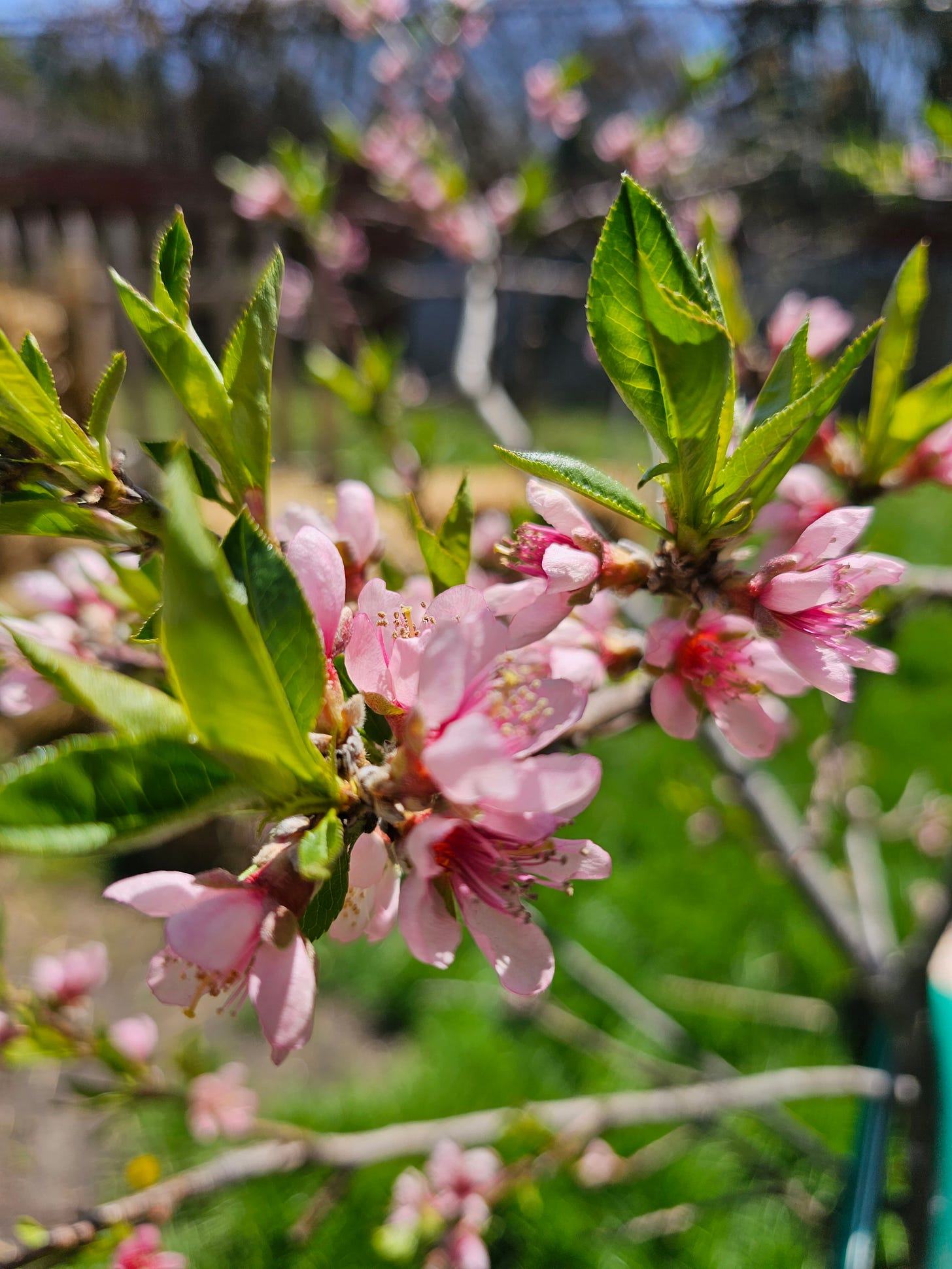
So far we’ve planted apple, pear, peach, cherry, and pawpaw (which is pollinated by flies & beetles). Adjacent to the mini orchard is the bee yard (no help to the pawpaw) and the raspberry patch. There are baby trees outside the mini orchard: kiwi, with its greater direct sun requirement, and Chicago hardy fig, with its need for extra protection in winter. In contrast to these more exotic fruits for our Zone 6a, the native pawpaw trees have required extra shade from the hot sun, which we’ve provided with gardening cloth. (To look up your USDA growing zone by zip code, click here.)
We’re growing other fruits besides— grapes, strawberries, blueberries, and elderberries— but they’re not in the mini orchard and don’t grow on trees, so they’ll get a separate post. And to my children and other scientifically rigorous persons: yes, I know that we grow other plants that are classified as fruits (tomatoes, squash, etc.), but I’m going with the vernacular classification system. A very good explanation of fruits vs. vegetables (with illustrations) can be found here.
Though waiting for the trees to fruit and grow may take patience, the early spring blossoms are an immediate delight.
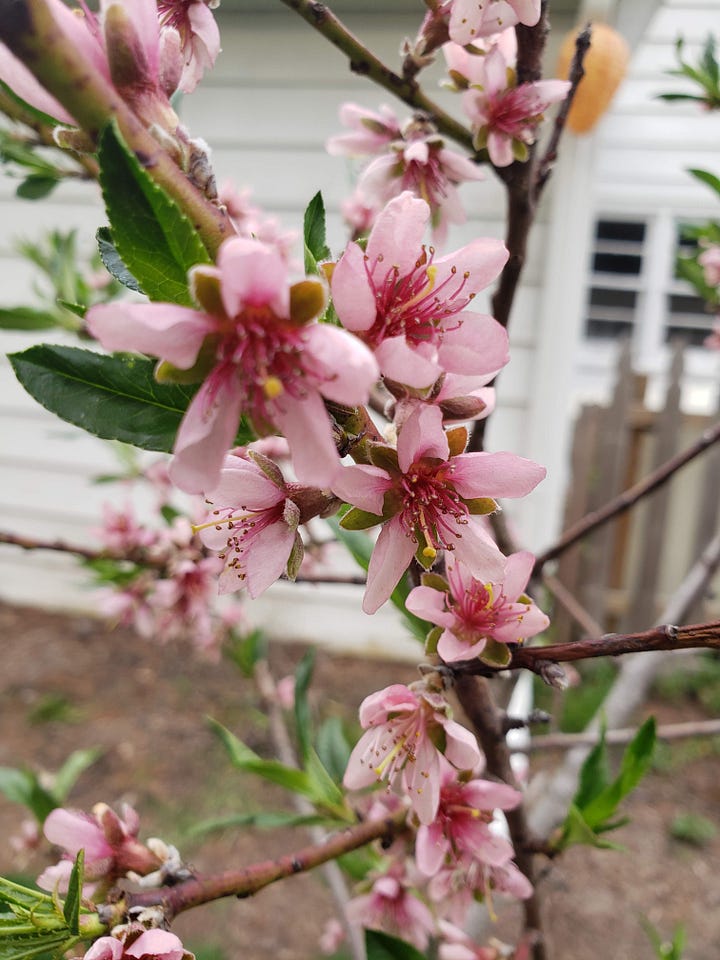
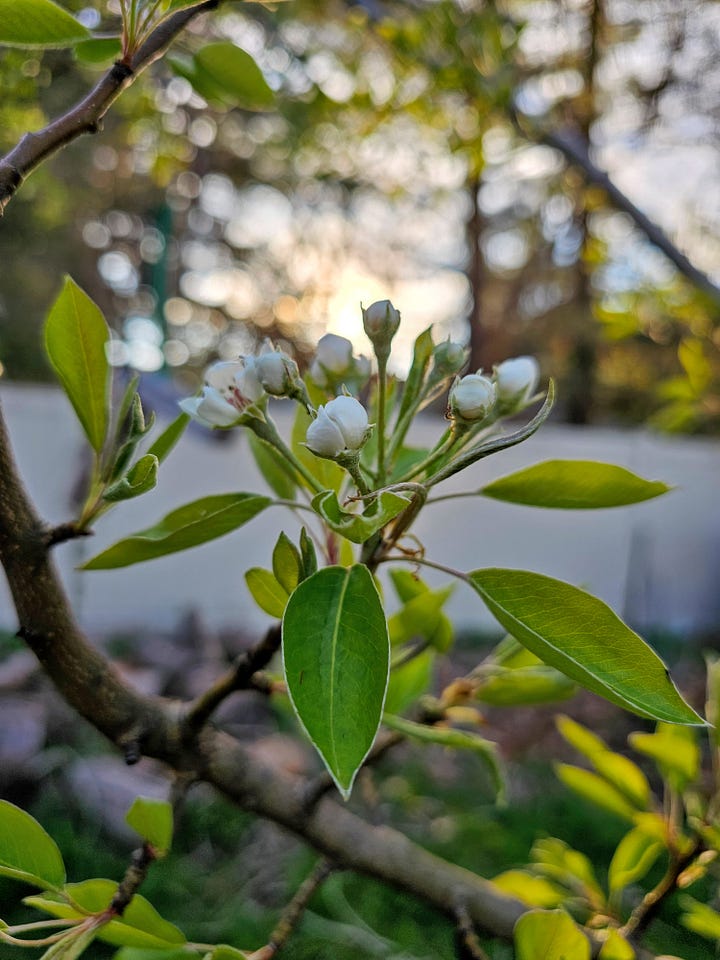
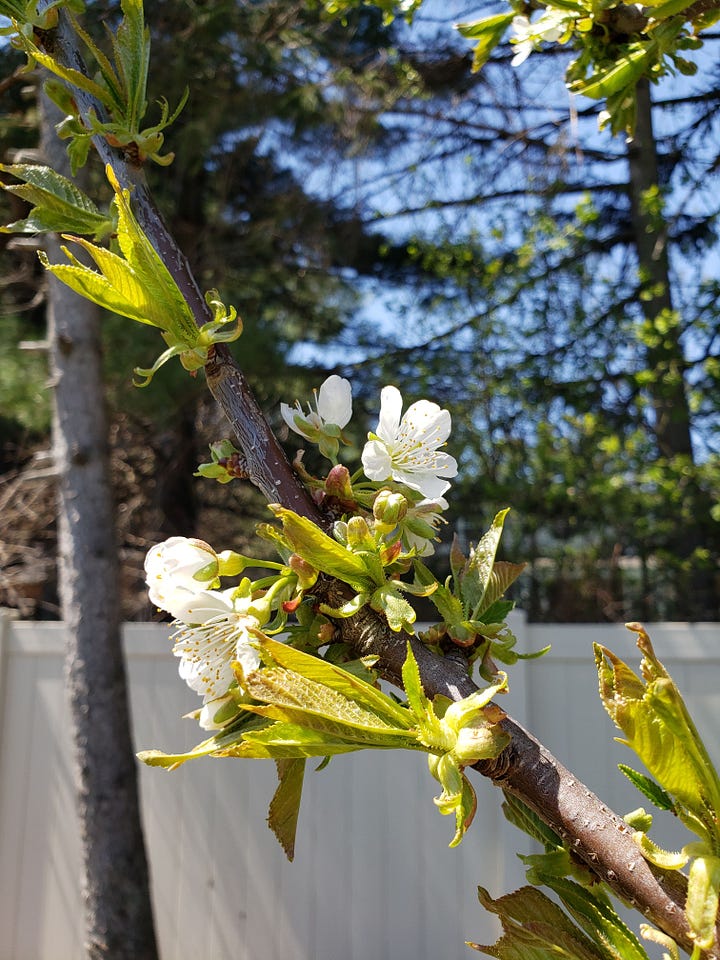

Mushroom Logs
These are the true test of patience, being a work in progress since July 2021. It was our son’s idea and Phillip, along with family & friends, helped with the execution. Oak and maple logs were cut, left to season, hauled to our yard, and stacked. Then holes drilled in the logs, spawn plugs of shiitake & reishi hammered into the holes, melted wax applied over the plugs, and the logs again stacked or partially buried.
Now nearly 2 years on, and no mushrooms yet. Positive signs of fungal growth but nothing harvestable for delicious eating. Thinking that could be the fault of squirrels, location, amount of sun exposure, or lack of consistent watering. So the mushroom logs have now been moved to the back garden, where they will get more hours of shade and more consistent watering, in their new dual role as supports for semi-raised beds.
This is Phillip’s idea, to save our backs and try to make the garden more organized and manageable. In the meantime, it looks like we’re building WWI re-enactment trenches for the wee folk.
On Trees
I’ve always loved trees. As a child, I wrote a sad poem in lament of the tree that our neighbors cut down to build a new garage. I drank in descriptions of forests in books. When walking in the woods, I had always been certain that the trees were sentient, that different groups of trees held varying degrees of malice or beneficence to other life forms, and that I could feel the difference. I could easily believe that Tolkien was an objective observer, as well as a teller of fantastical tales, when he wrote of malicious Old Man Willow and of Tom Bombadil:
Tom’s words laid bare the hearts of the trees and their thoughts, which were often dark and strange, filled with a hatred of things that go free upon the earth, gnawing, biting, breaking, hacking, burning: destroyers and usurpers.
—J.R.R. Tolkien, The Fellowship of the Ring1
I was thrilled to read The Hidden Life of Trees several years ago2 and to watch the film of the same name more recently. It gives scientific evidence for the social network of trees, including how a lone tree won't grow as well without its family to nourish it. (You can pretty easily find the film on a streaming network, and it's an enjoyable way to get the main points of the book.) The developing knowledge on the complex relationship between mycelium and tree roots is especially interesting (hint: it's not a purely symbiotic give-and-take).
May Boughs
May is here! The world outside our windows is in bloom! I'm taking comfort from old Irish weather lore that a wet and windy May means a good growing season ahead. Particularly, if the first few days of May are cold & rainy then it is supposed to bode well. In which case, we are in luck here! Others have written recently, very well and in more detail than I could, about May Day and its traditions.3 So I'll just leave this photo of our magnolia tree in bloom, as my May Bough gift to you.
Happy May!
—Erin, in Michigan
Affiliate link: If you make a book purchase through our Bookshop link, you help to throw a little change our way, at no additional cost to you. Thank you.
Ibid-ay on the affiliate-ay ink-lay.
If you have an interest in folk holiday traditions, you really ought to subscribe to:


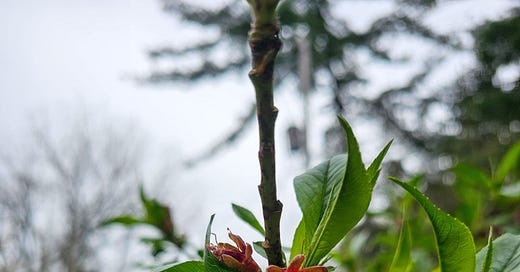


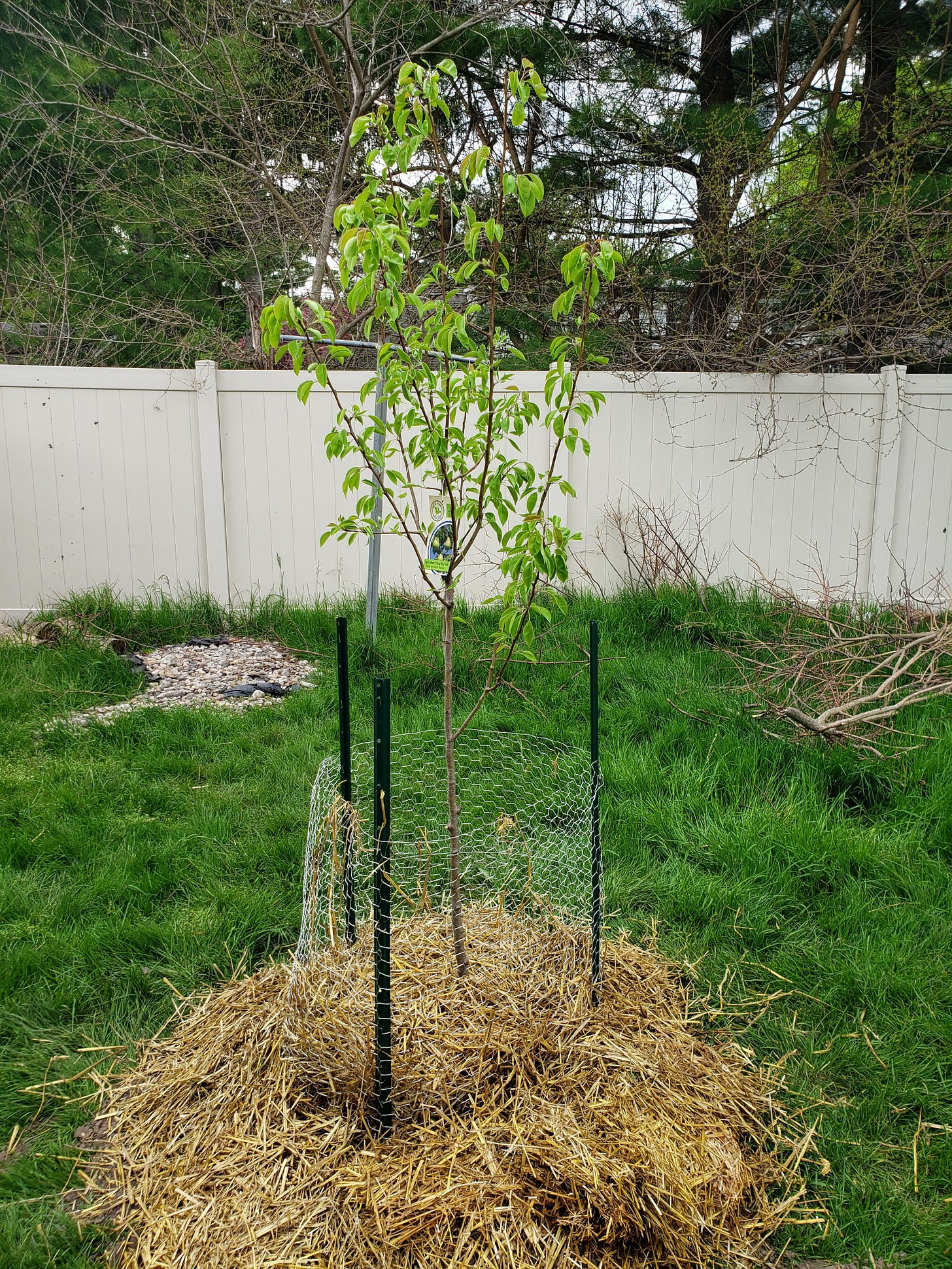
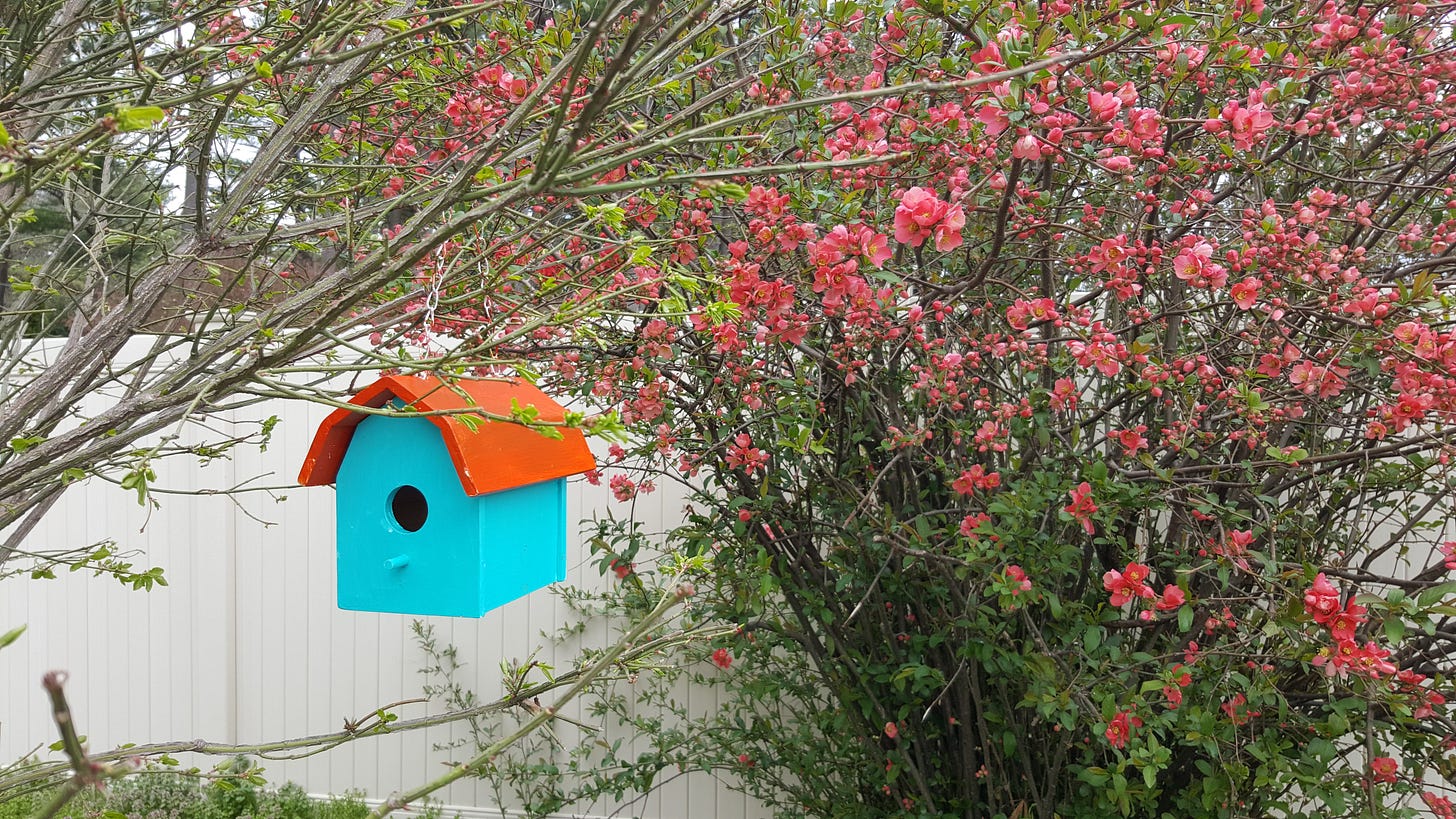
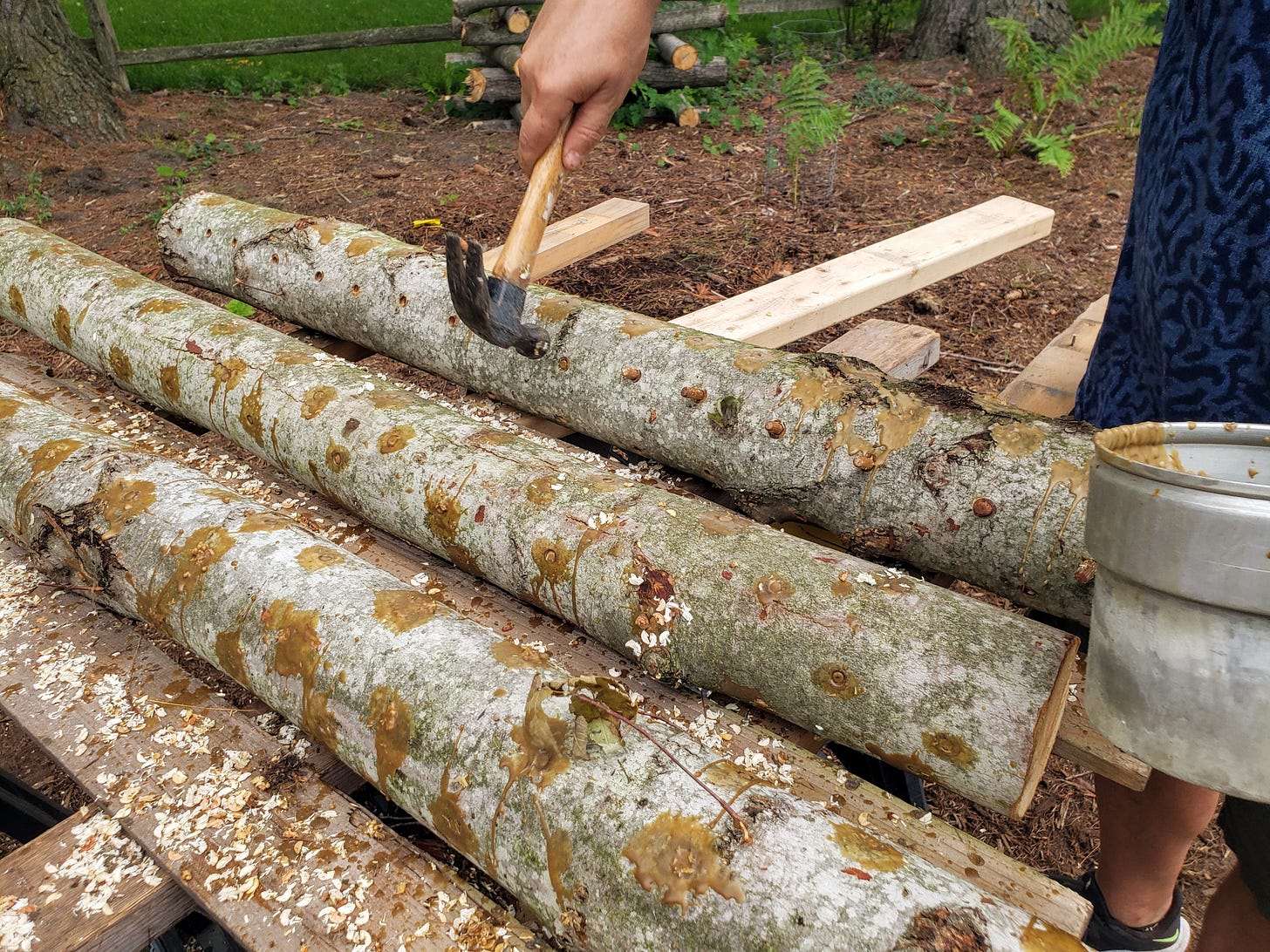


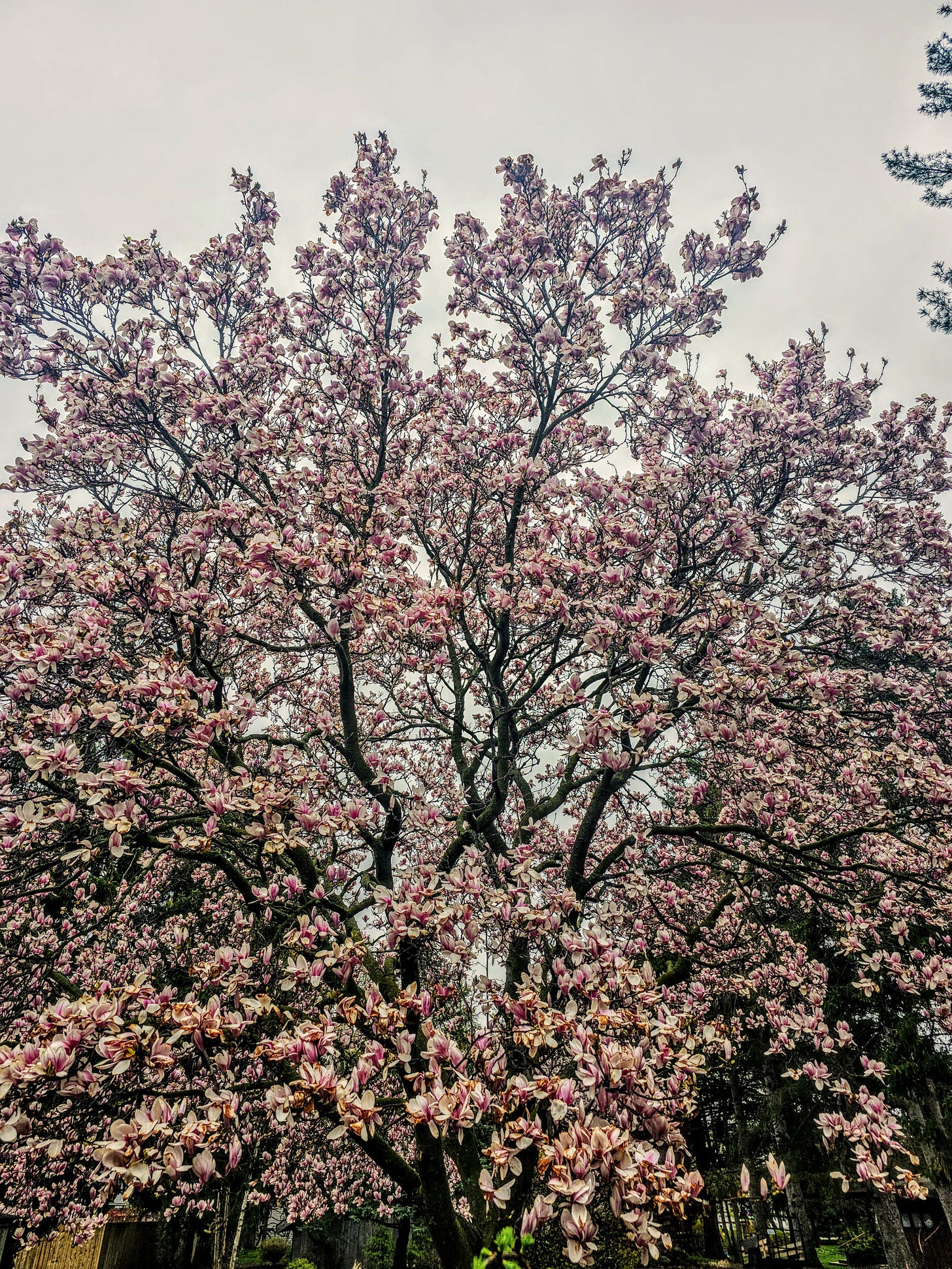
I so enjoyed this post, especially on the second read through when I took time to click on your links. The charts and descriptions of the differences between fruits and vegetables were so informative. Yet your writing about trees was what got me recalling a rush of childhood memories. From the weeping willow in my Aunt Suzanne's yard that reminded me of a huge wig and the plum tree my cousins and I would climb and eat plums to our hearts content, to the mini orchard surrounding my grandparents old farm house. There were apple, cherry and two varieties of pear that my grandma would enter in the County Fair in hopes of a winner's ribbon. I also remember her propping a clear glass bottle on a branch to enclose a blossom and watch a pear grow inside it. Not to be forgotten is the treehouse my father built up high in our backyard elm tree, complete with a trapdoor in the floor boards. Hurray for trees! They are like dear old friends never to be forgotten.
I'm encouraged seeing someone else doing something similar to what I'm trying to do on my own little property. We have a few fruit trees started, but we definitely want to add more in the future including pawpaws!